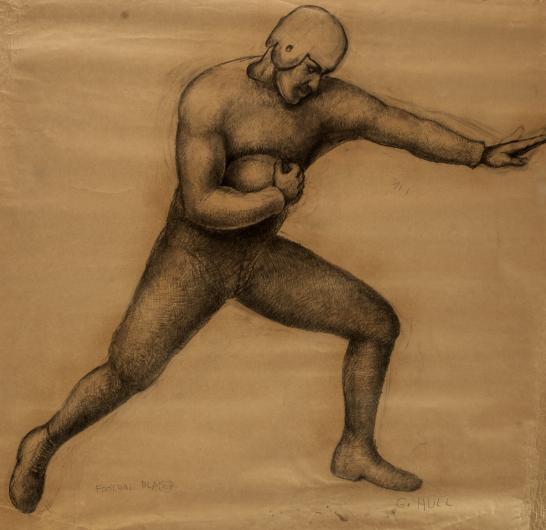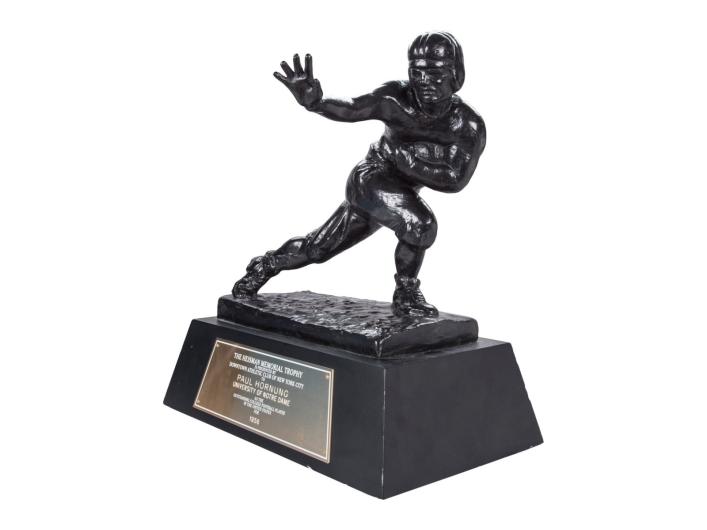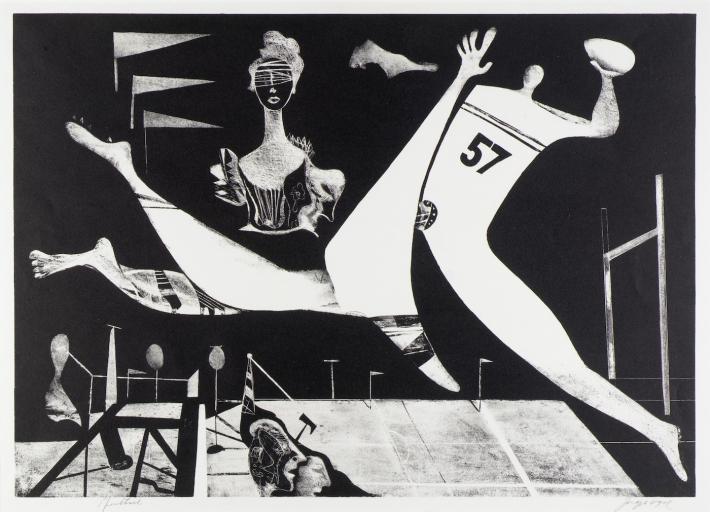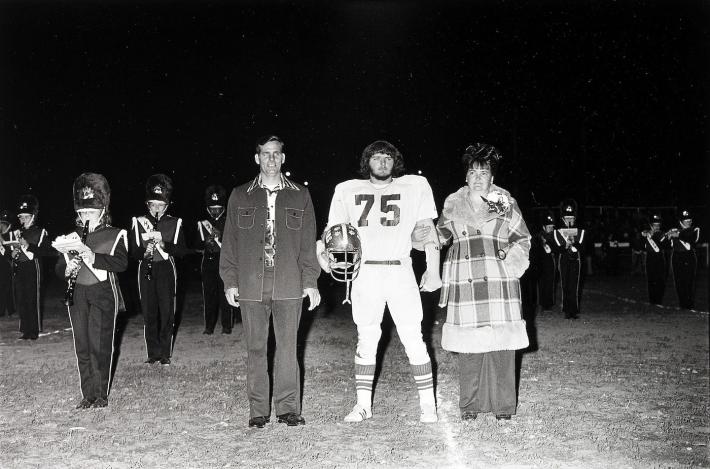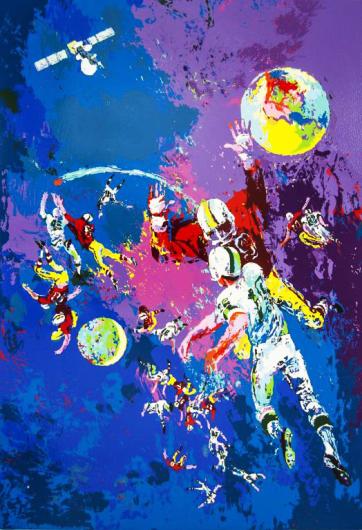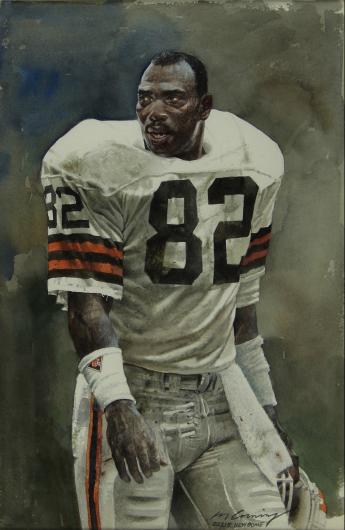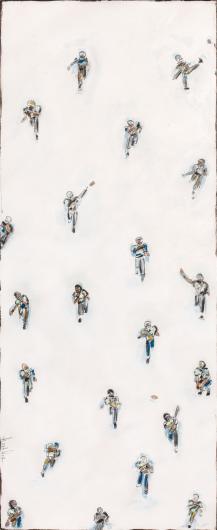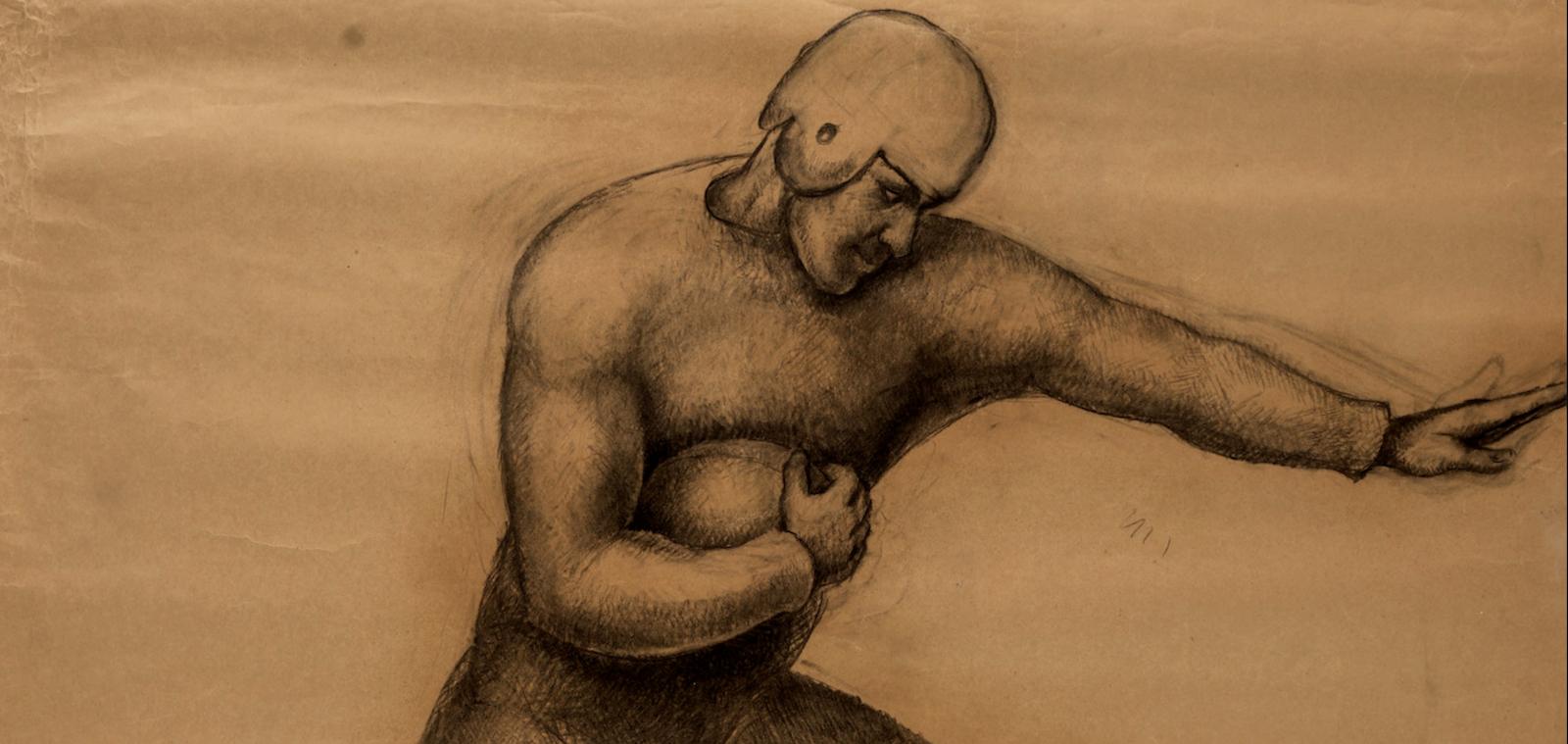
Like many team sports in Western Europe and North America, American football first emerged as a game for upper-class young white men. Professional football dates to 1892, when the first college players began receiving financial compensation for play. Despite its relative paucity in the art world compared to other sports, artists have long been compelled by football’s contentious history, rules, players, and the fervent culture of fandom it has inspired throughout the United States. The game remains a uniquely American past-time—playing it, watching it, and identifying with its teams and athletes. And the relatively few artists who have explored it since its inception have been drawn to the cultural issues that accompany it: the beauty of the male athletic body in motion, celebrity culture, the physical duress and damage the game can cause, the passion it inspires in fans, and ever-present questions about sexism, racism, inclusion, exclusion, exploitation, and commercialism.
From honorary sculptures that celebrate athletic valor, to Realist portraits that humanize individual team members, to Abstract prints that raise uncomfortable questions about violence and pain, the following seven artists prove that this American cultural phenomenon is ripe for increasingly-diverse artistic engagement.




